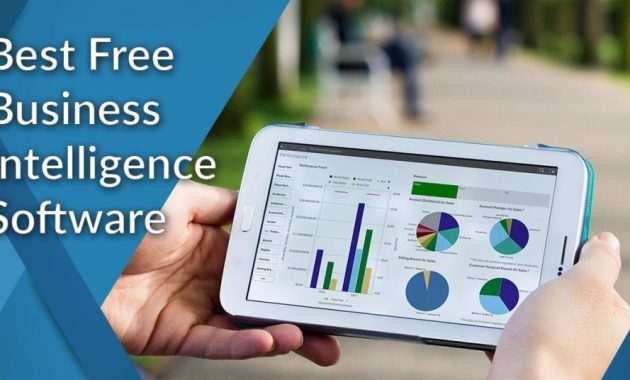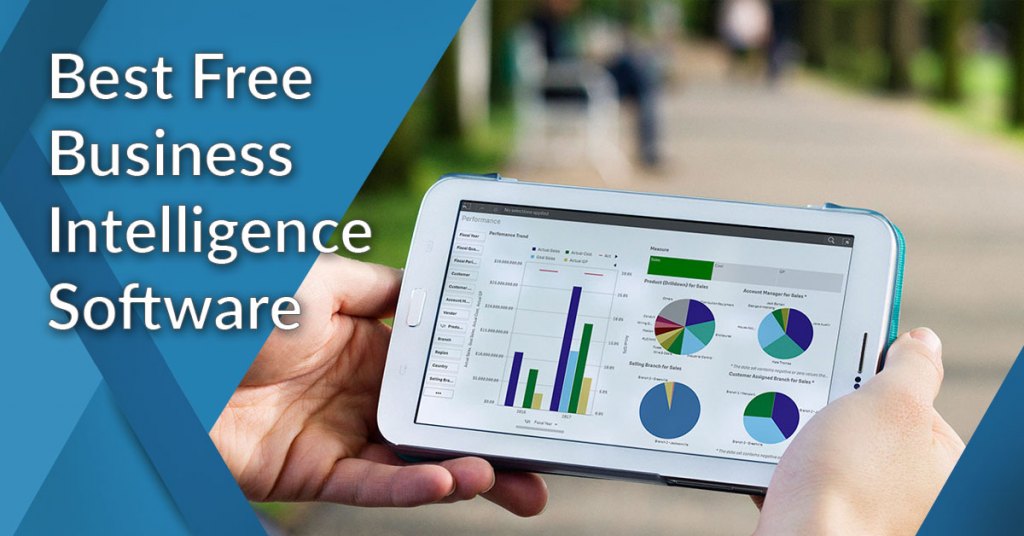
Implementing Business Intelligence Software for Teamwork: A Cost-Effective Approach
In today’s data-driven landscape, businesses are constantly seeking ways to leverage information for improved decision-making. Business Intelligence (BI) software has emerged as a powerful tool. It enables organizations to collect, analyze, and interpret data. The goal is to gain valuable insights. However, the perceived cost of implementing BI software can be a significant barrier. This article explores how to implement Business Intelligence software for teamwork without incurring substantial expenses. We will discuss strategies, tools, and best practices for achieving this goal.
Understanding the Value of Business Intelligence
Before diving into cost-effective implementation, it’s crucial to understand the benefits. BI software empowers teams to:
- Identify trends and patterns.
- Make data-driven decisions.
- Improve operational efficiency.
- Enhance customer satisfaction.
- Gain a competitive advantage.
By providing a comprehensive view of business performance, BI tools facilitate better collaboration. They also enhance communication among team members. This leads to more informed and effective teamwork. A well-implemented BI system can transform raw data into actionable intelligence. This, in turn, drives business growth and profitability. The core of this transformation is the ability to analyze data. You can use this data to inform strategic decisions.
Identifying Your Team’s Needs
The first step in implementing Business Intelligence software for teamwork is to assess your team’s specific needs. This involves:
- Defining key performance indicators (KPIs).
- Identifying the data sources you need to analyze.
- Determining the types of reports and dashboards required.
- Assessing your team’s current data analysis skills.
Conduct interviews and surveys. These can help you gather input from team members. Understand their challenges and requirements. This will help you choose the right BI solution. Tailoring the system to your team’s needs ensures its adoption. It also maximizes its value. Consider the different departments. They may have unique data requirements. The marketing team, for example, may focus on customer acquisition. The sales team may focus on conversion rates. The finance team may focus on profitability. A proper assessment will guide your implementation process.
Exploring Open-Source BI Solutions
One of the most cost-effective ways to implement Business Intelligence software for teamwork is to leverage open-source solutions. Several powerful and free BI tools are available. These tools offer a range of features. They include data visualization, reporting, and data analysis capabilities. Some popular open-source options include:
- Metabase: User-friendly and great for visualizations.
- Superset: Developed by Apache, powerful and scalable.
- Jaspersoft: A comprehensive BI suite.
- Pentaho: Offers extensive data integration features.
Open-source solutions often have active communities. These communities provide support, documentation, and resources. This can significantly reduce implementation costs. The initial investment is often limited to training and customization. You can tailor open-source tools to your specific needs. This will enhance their effectiveness. You can also scale them as your team grows. [See also: Choosing the Right Open-Source BI Tool]
Utilizing Cloud-Based BI Platforms
Cloud-based BI platforms provide another cost-effective approach. These platforms offer several advantages. They eliminate the need for expensive hardware and IT infrastructure. They offer subscription-based pricing models. This makes them more affordable. These platforms also provide scalability and flexibility. You can easily add or remove users. You can also adjust storage capacity as needed. Popular cloud-based BI platforms include:
- Microsoft Power BI: Integrates seamlessly with other Microsoft products.
- Tableau: Known for its intuitive interface and powerful visualization capabilities.
- Google Data Studio: Free for basic use and integrates with Google services.
- Looker: Offers advanced analytics and data modeling features.
Cloud-based solutions are typically easier to deploy and maintain. They also offer automatic updates and security features. This reduces the burden on your IT team. Consider the specific features and pricing plans. Ensure they align with your team’s needs and budget. Evaluate the data integration capabilities. Ensure they support your data sources. [See also: Cloud vs. On-Premise BI: A Comparison]
Data Integration and Preparation: The Foundation
Regardless of the BI solution you choose, data integration and preparation are critical. This involves collecting data from various sources. It also involves cleaning, transforming, and loading the data into a central repository. This process is often referred to as Extract, Transform, Load (ETL). Effective data integration ensures that your BI reports and dashboards are accurate. They are also reliable. Consider using ETL tools. These tools automate data integration processes. They reduce manual effort and errors. Popular ETL tools include:
- Apache NiFi: A robust and scalable data flow system.
- Talend: Offers a range of open-source and commercial ETL solutions.
- Informatica PowerCenter: A leading commercial ETL tool.
Prioritize data quality. This is essential for meaningful insights. Implement data validation and cleansing processes. This will ensure data accuracy. Build a robust data pipeline. This will automate data preparation tasks. Proper data preparation is the foundation of effective Business Intelligence software for teamwork.
Training and User Adoption
Implementing Business Intelligence software for teamwork is not just about technology. It’s also about ensuring user adoption and providing adequate training. Invest in training programs. Teach your team how to use the BI tools effectively. Provide them with the skills to analyze data. Also, give them the skills to interpret the results. Offer ongoing support and mentorship. This will help users overcome challenges. It will also maximize the value of the BI system. Consider creating internal champions. These are individuals who are proficient in using the BI tools. They can assist other team members. They can also promote the use of data-driven decision-making. Make sure the system is user-friendly. This will improve adoption rates.
Fostering a Data-Driven Culture
Successful implementation of Business Intelligence software for teamwork goes beyond technology and training. It requires fostering a data-driven culture. This involves:
- Encouraging data-driven decision-making at all levels.
- Promoting data literacy across the organization.
- Establishing clear data governance policies.
- Recognizing and rewarding data-driven insights.
Regularly communicate the value of BI to your team. Share success stories and examples of how data has improved business outcomes. Encourage collaboration and knowledge sharing. This will create a culture of continuous improvement. This will also promote the use of data. The goal is to improve teamwork. This will ultimately drive business success. Promote the use of data for decision-making. This will ensure effective teamwork.
Measuring and Evaluating Success
After implementing Business Intelligence software for teamwork, it’s crucial to measure and evaluate its success. Define clear metrics to track the impact of the BI system. These metrics should align with your business goals. Examples include:
- Improved sales performance.
- Increased customer satisfaction.
- Reduced operational costs.
- Faster decision-making cycles.
Regularly review the performance of the BI system. Identify areas for improvement. Gather feedback from users. This will help you optimize the system. It will ensure it continues to meet your team’s needs. Track your KPIs. This will measure the software’s impact. Use feedback to improve the system continuously. This will maximize its effectiveness. [See also: Key Performance Indicators for Business Intelligence]
Case Studies: Real-World Examples
To illustrate the benefits of cost-effective Business Intelligence software for teamwork, let’s look at some real-world examples:
Example 1: A small marketing agency implemented Metabase. They used it to track campaign performance. They analyzed website traffic. They also analyzed social media engagement. This enabled them to optimize their marketing strategies. This increased lead generation by 20%. They achieved this without significant upfront investment.
Example 2: A retail company adopted Microsoft Power BI. They used it to analyze sales data. They identified slow-moving inventory. They also identified opportunities for cross-selling. This led to a 15% increase in sales. They also improved inventory turnover. They achieved this with a relatively low monthly subscription cost.
These case studies demonstrate that implementing Business Intelligence software for teamwork doesn’t require a huge budget. You can achieve significant results by choosing the right tools. You can also adopt the right strategies. The key is to focus on your team’s needs. It’s also important to leverage cost-effective solutions. These solutions can drive data-driven decision-making. They can also improve teamwork.
Conclusion: Empowering Teamwork Through Data
Implementing Business Intelligence software for teamwork doesn’t have to be expensive. By carefully assessing your needs, exploring open-source and cloud-based solutions, and prioritizing data integration, you can achieve significant results. Remember the importance of user training. Also remember the importance of fostering a data-driven culture. You can empower your team to make better decisions. You can also drive business growth. Embracing data is no longer a luxury. It’s a necessity. It’s essential for success in today’s competitive business environment. The effective implementation of BI software will transform your teamwork. It will also transform your business performance.

